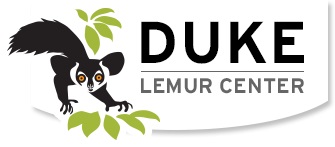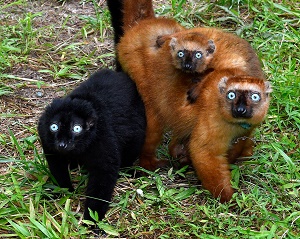
 Special to the Philanthropy Journal
Special to the Philanthropy Journal
By Kim Pernicka and Kristy Wasilewski
As a land-grant university, NC State is committed to providing students hands-on, highly-engaged learning opportunities AND to providing research that is of direct, practical use to the fields we work in. Philanthropy Journal proudly presents this series of evidence-based resource articles developed by Dr. Amanda J. Stewart‘s masters level Management of Nonprofit Organizations class. These articles represent a perfect overlap of engaged learning and practical research.
As nonprofit leaders examine their resources and strategize for longevity, it is important to consider the value of all assets – not just financial assets – that contribute to organizations’ purposes. One such asset is human capital, defined as the knowledge and skills that staff contribute to an organization’s mission[1]. According to the Nonprofit Business Advisor, as the sector continues to grow, nonprofit leaders must be proactive about sustaining their human resources to recruit and retain talent.
 Durham’s Duke Lemur Center embraces the value of human capital. Development Officer Mary Paisley, who began working at the Center in February, considers herself lucky to be part of such a committed team of individuals. “These people are really passionate about what they do. They care about the mission of the organization. They care about the animals. It’s almost like an extended family,” she said.
Durham’s Duke Lemur Center embraces the value of human capital. Development Officer Mary Paisley, who began working at the Center in February, considers herself lucky to be part of such a committed team of individuals. “These people are really passionate about what they do. They care about the mission of the organization. They care about the animals. It’s almost like an extended family,” she said.
The staff’s ability to work cohesively to advance the Center is integral to the organization’s success. The Center’s leadership implements practices to help engage and inspire its employees. Their strategies include:
Empowering staff
Intimately involved in the day-to-day details, nonprofit staff should be engaged in analyzing and responding to organizational performance, as they can offer fresh perspectives on the nonprofit’s important work[1]. Leaders can call upon staff insights in strategic planning, fund development, program evaluation and messaging. The Duke Lemur Center’s staff meets daily to share updates and anecdotes across the organization; Paisley describes the morning meetings as the most efficient meetings she has been involved in at a work place. She calls upon shared knowledge from the education, research and conservation teams to enhance messaging and to deliver more compelling appeals to supporters.
Additionally, the Center organizes team-building opportunities. These events enable leadership to invest in building relationships and camaraderie among staff, promoting communication among every department of the organization. Team members recently created a friendly Frisbee competition that allowed staff to bond and laugh together outside of their usual roles. Worksite cleanup days offer another purposeful chance for staff to problem-solve in a different environment.
Engaging supporters
Those that truly understand a nonprofit’s mission, vision and community value are an organization’s best advocates. Staff at the Duke Lemur Center are often asked to share their expertise with volunteers, visitors and donors. Tour guides, passionate about their roles, share narratives about the Center’s lemurs to engage visitors. For example, they may describe a successful lemur introduction in which the lemurs began excitedly grooming the air before they could meet. Additionally, research and programmatic staff make time to address specific questions from guests. Paisley says the staff are “very willing to take extra measures to ensure [visitors] feel welcomed and a part of our family… Everyone here is willing to support the effort to keep our supporters engaged and feeling appreciated.”
Sharing an organization’s contributions to its field is a simple way for nonprofits to educate supporters about their work. For example, the Division of Fossil Primates, which houses the Center’s collection of more than 24,000 fossil specimens, is an important resource for researchers. The department is now being utilized as a tool for educating supporters and engaging with potential donors. Paisley recently began working with its curator, Gregg Gunnell, to identify opportunities to include more of the division’s work in the Center’s promotional materials. Additionally, conservation coordinator Charlie Welch leads annual ecotours to Madagascar where he engages supporters by showing first-hand what their support helps the Center to protect. These contributions to research and conservation are a powerful mechanism for demonstrating the Center’s contributions to the field and the value of its supporters.
Encouraging storytelling
Storytelling is a compelling tool for reminding contributors of the value of an organization’s work. Nonprofits have an important role in our society, but it is crucial for organizations to demonstrate their impact. Through media platforms, nonprofits can offer staff opportunities to share their knowledge with a broader audience and to keep supporters apprised. For the Duke Lemur Center, blog posts and social media outlets, including Facebook and Youtube, have played an important role in giving staff members a voice to connect with supporters, who engage with the organization through comments, likes and shares. Additionally, features in the News & Observer have been helpful in selling out the Center’s bi-annual Lemurpalooza event, which expands opportunities for community involvement and a broader audience with which the staff can connect.
The Center’s staff, including Welch and curator Andrea Katz, take extra measures to forge connections through storytelling. Paisley has frequently utilized the staff members’ extensive knowledge and experience with species survival plans and conservation programs in the Sambava-Andapa-Vohemar-Antalaha (SAVA) region of Madagascar when communicating with supporters. Welch makes every effort to personally lead SAVA conservation supporters on tours of the Center and to share updates on his efforts overseas; he also develops SAVA conservation newsletters for supporters who value his expertise and are eager to hear directly from him.
Staff bring knowledge, experience and creativity to help advance a nonprofit’s mission and demonstrate its value in the community. By empowering staff, engaging supporters and encouraging storytelling, the Duke Lemur Center demonstrates its commitment to its human capital. Careful management and investment in these non-cash resources are critical to organizational success, as human resources are the most valuable resource of any organization[2].
[1] Bell, Jeanne and Shannon Ellis. “Financial Leadership in Nonprofit Organizations.” The Jossey- Bass Handbook of Nonprofit Leadership and Management, edited by David O. Renz, John Wiley and Sons, Inc., 2016, pp. 477-487.
[2] Herman, Robert D. “Executive Leadership.” The Jossey-Bass Handbook of Nonprofit Leadership and Management, edited by David O. Renz, John Wiley and Sons, Inc., 2016, pp. 167-187.
Kim Pernicka is a Masters of Accounting student at North Carolina State University. She has over 15 years of experience working in animal-based nonprofits.
Kristy Wasilewski is a Masters of Public Administration student at North Carolina State University. Her background includes donor relations roles in higher education, a community foundation and animal rescue.






